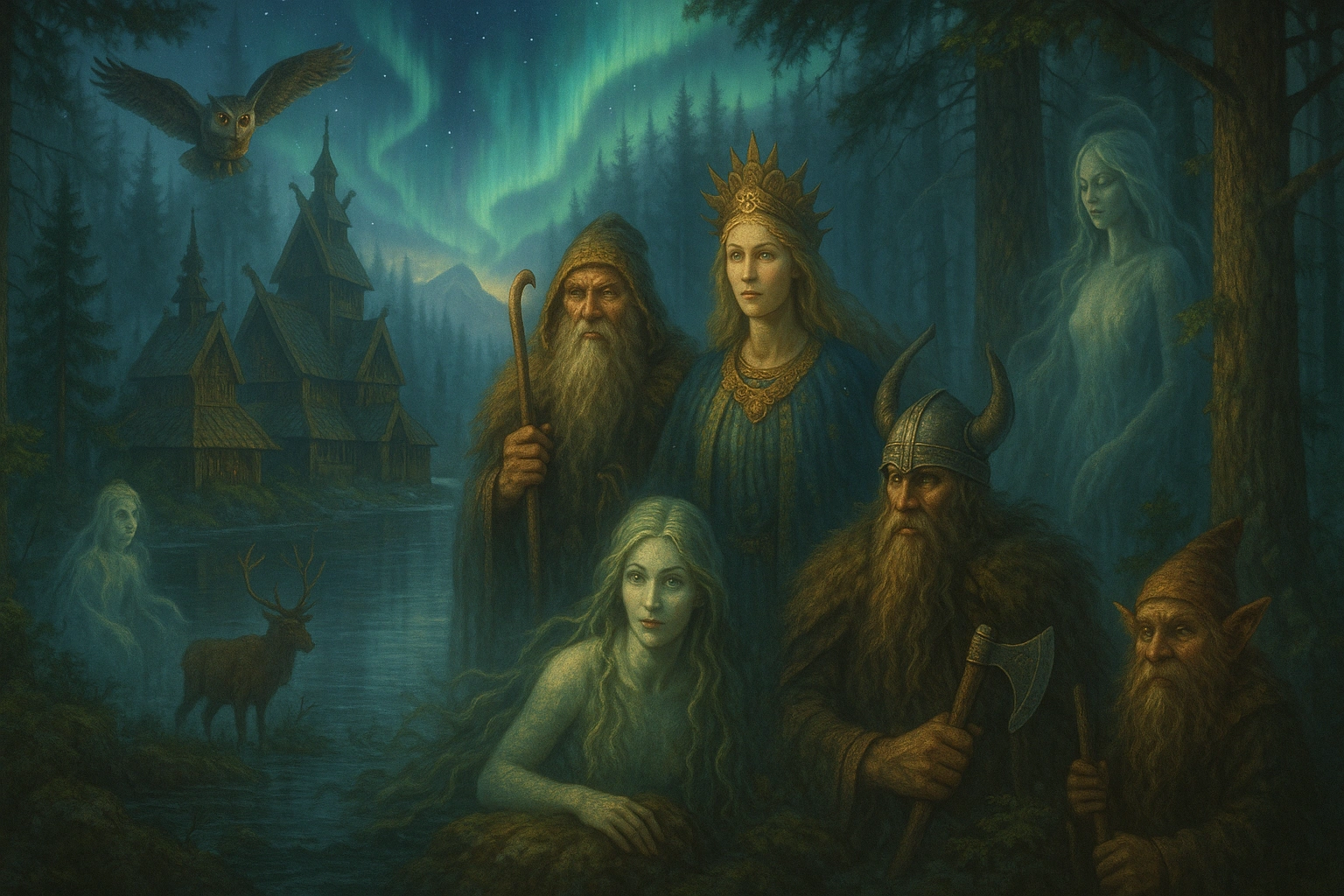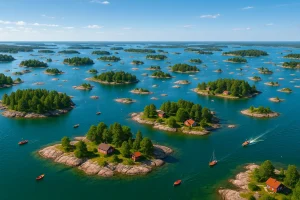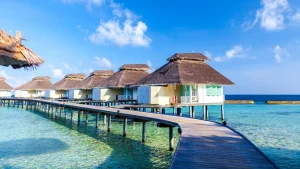Finnish mythology is one of the most fascinating parts of Finland’s culture which is filled with powerful gods, epic heroes and magical folk tales that have been passed down for centuries and from the sky god Ukko to the wise Väinämöinen and the mysterious creation myth of Ilmatar as these stories are deeply tied to nature, forests and lakes as today, travelers exploring the country through Finland tour packages often find themselves drawn to this ancient world of myths and legends as it adds a rich cultural layer to the natural beauty of Lapland, Helsinki and beyond.
What is Finnish Mythology / Finland Folklore
Finnish mythology (or Finland mythology) is the traditional belief system, ancient stories, gods, heroes and myths of the Finnish people (and related Finnic peoples like Karelians). It includes finnish folklore and finland myths (oral stories, poems, legends) plus the big national epic, Kalevala, which collected many folk tales. It’s not exactly one fixed religion but many local beliefs blended over time, especially before Christianisation and in remote places.
Finnish Creation Myth: How the World Began in Finnish Mythology
This is one of the most famous parts of finland creation myth, central in Kalevala:
- The goddess Ilmatar (also called Luonnotar) floats alone in a void of sea and air.
- A bird (usually a duck) lays eggs on her knee. The eggs break, and from their pieces come the earth, sky, sun, moon and stars.
- Then Ilmatar gives birth to Väinämöinen, a wise hero / demigod figure who helps shape the world.
This myth answers questions like How did Finland begin? Where did the sun and moon and sky come from?
Major Deities / Heroes in Finnish Mythology Gods & Legends
Here are the key figures you’ll want to know. I’ll include what they do, why people tell their stories, and how they connect.
| Name | Role / Domain | Key Stories / Traits |
| Ukko | God of sky, thunder, weather, often the chief deity. | He controls storms, rain, sky, and harvest. People prayed for good harvests, fair weather. |
| Akka (sometimes Maaemä) | Earth mother / fertility / nature goddess. | Wife or partner to Ukko in some stories. Symbolises the earth, growth, life. Some uncertainty exists who exactly she was in all local variants. |
| Ilmatar / Luonnotar | Goddess of air / primordial female creator. | Central in creation myth. She floats in nothingness, gets impregnated by sea & wind (mythic), gives birth to Väinämöinen. |
| Väinämöinen | Wise old hero / shaman / bard. | Not exactly a god, but semi-divine / superhuman. A singer, magician of words. Helps shape the earth and culture. |
| Ilmarinen | Master craftsman / blacksmith god‐figure. | Forger of the magical Sampo (artifact of fortune), makes great creations, sometimes described as forging sky. |
| Tapio & Mielikki | Forest spirits / gods. | Tapio is a forest king spirit; hunters pray to him. Mielikki is his wife, goddess of forest and game. |
| Päivätär & Kuutar | Sun goddess / Moon goddess. | Päivätär spins silver, weaves clothes, associated with light; Kuutar golden, moon-light, etc. |
| Tuoni & Tuonetar | Rulers of the underworld / dead. | Tuonela is the land of the dead. Tuonetar produces the beer of oblivion etc. Souls go there after death. |
| Loviatar | Goddess of disease & suffering. | Daughter of Tuoni/Tuonetar. Gives birth to maladies; one myth says nine sons who become diseases. |
Finnish Folklore and Folk Tales: Legends That Shaped Finnish Mythology
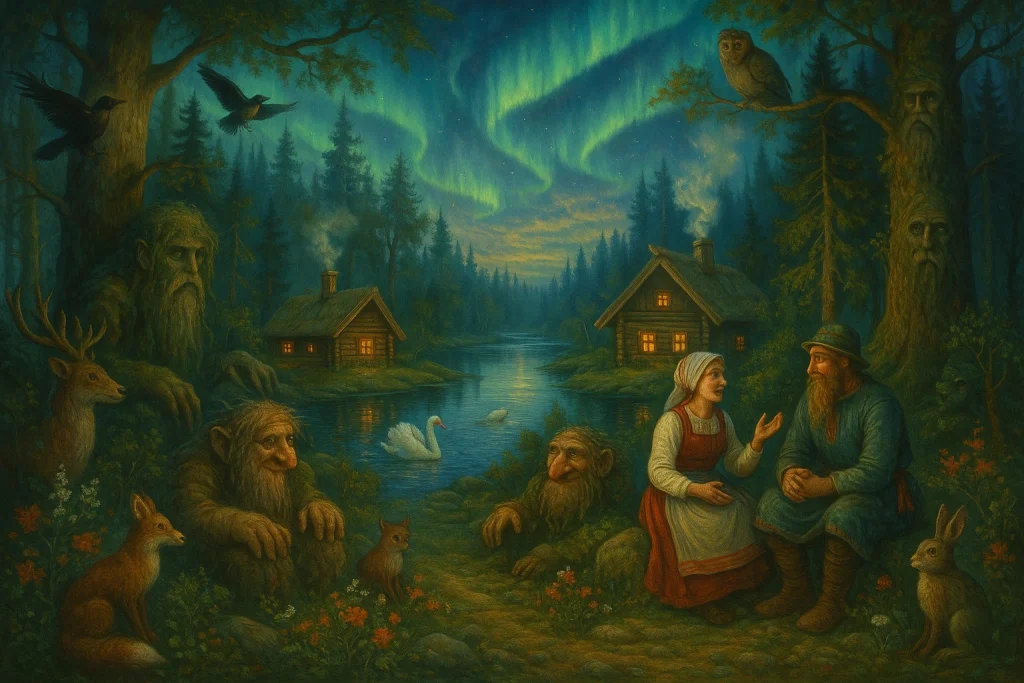
- Kalevala is the national epic: collected by Elias Lönnrot in the 1800s from oral sources. It stitches together many finnish folk tales and folk songs.
- There are lots of local tales: about forest spirits, shapeshifters, animals and nature being alive. The land, lakes, winds, animals often act like spirits or god-entities.
- Heroes like Lemminkäinen, Kullervo, and others appear: tragic, flawed, full of human feelings. These stories often ask: what is heroism? What cost does pride or magic bring?
The Underworld in Finnish Mythology: Tuonela and the Afterlife
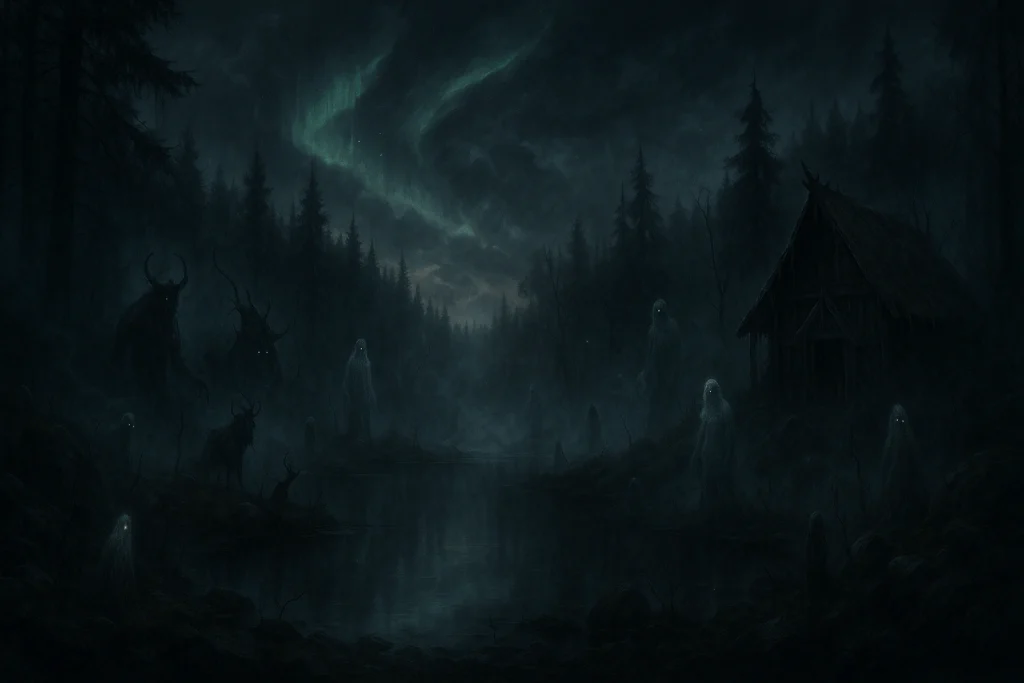
One thing that many want to know: what happens after death in finnish myths.
- Tuonela is the land of the dead. It is ruled by Tuoni (god of the dead) and Tuonetar (his wife). Souls go there.
- It is not exactly a place of punishment (unlike some myths elsewhere). More solemn, still, a realm separate from the living. The emphasis is on silence, peace, endings.
Anniki in Finnish Mythology and Other Forgotten Figures
You asked about Anniki Finnish mythology. Here’s what is known and what is uncertain:
- Annikki appears in Kalevala as a maiden, “Annikki hyväniminen / Yön Tytti, hämärän neiti…” (Annikki of good name, girl of night, maid of twilight).
- She is more of a poetic figure than a fully fleshed goddess with her own myths. There’s no solid ancient tradition or large cult around her that survives. She represents night, twilight, the border times between dark and light.
Untold Parts of Finnish Mythology That Many Stories Miss
Here are common gaps I noticed, and I’ve tried to include the answers:
- Local variation: Many sources don’t show how different regions in Finland, Karelia, Ingrian, etc., had distinct versions. I’ve mentioned that some deities’ roles shift or names change.
- Everyday folklore + animism: Stories of spirits in trees, stones, lakes, not just big gods. People believed nature was alive.
- Overlap with Sámi myths: Some overlap, borrowings especially in north Finland, Sámi people. Ukko and some nature spirits show similarity.
- Ambiguity over “god vs hero vs spirit”: E.g. Väinämöinen is sometimes treated like god, sometimes super-human mortal. Ilmarinen is part craftsman, part divine. Many figures are fluid.
- Creation of objects / magical items: The Sampo is huge in Finnish mythology but often treated superficially. I explained what it is, why it matters.
Why Finnish Mythology Still Matters
Because:
- The myths are deeply tied to nature. They reflect the seasons, forests, lakes, weather.
- They show a worldview where magic, song, words, ritual mattered. Where the border between humans and spirits was thin.
- They shaped Finnish identity. Kalevala helped strengthen Finnish language, folklore during times of foreign rule.
Key Questions About Finnish Mythology Answered Simply
- Who created the world? — Ilmatar floated, eggs from a duck, birth of Väinämöinen.
- Who are the top gods? — Ukko (sky/weather), Akka (earth/fertility), Ilmarinen (craftsman), Väinämöinen (song, wisdom).
- Is there a heaven / hell? — Not in a strict judeo-christian sense. Tuonela is the land of the dead, more peaceful than punitive.
- What role does nature play? — Huge role. Forests, lakes and wind are alive. Deities of forest, air, sea. Animism (spirits in non-human things) is central.
- Any goddesses? — Yes: Ilmatar, Akka, Tuonetar, Päivätär, Kuutar, etc. They are integral, not just secondary.
Conclusion: The Timeless World of Finnish Mythology and Finland Folklore
Finnish mythology is more than old stories as it is the soul of Finland’s culture and nature and from the Kalevala to small Finnish folk tales, every myth shares wisdom about life and respect for the land.
These Finland myths and legends still matter today as travelers often hear them while exploring Lapland or joining Finland tour packages where lakes, forests and skies feel alive with meaning.
What makes Finnish mythology timeless is its deep bond with nature and daily life and whether through Anniki’s tales, the underworld myths or simple Finnish folklore the stories continue to inspire and shape Finland’s identity.

